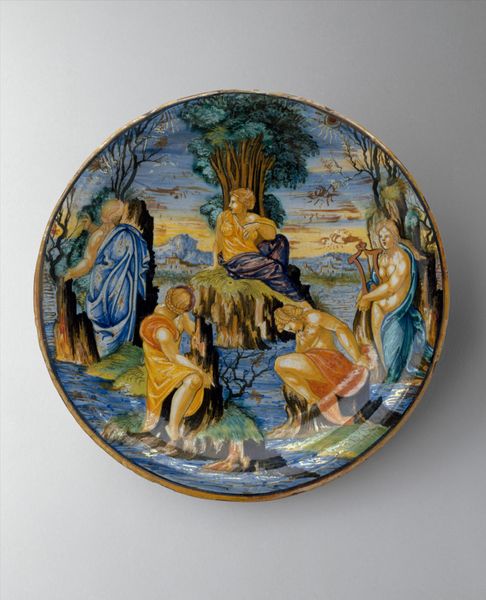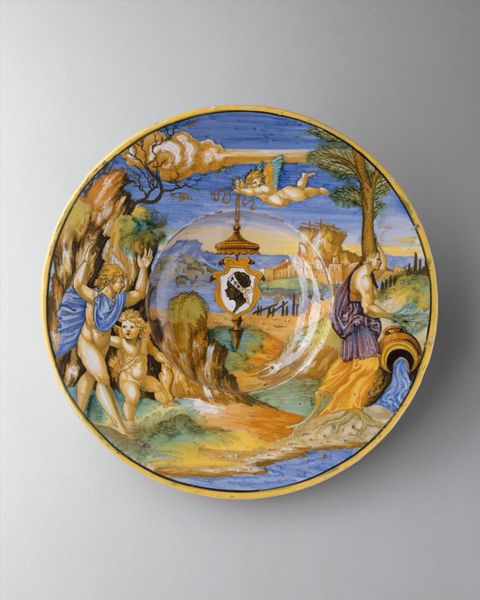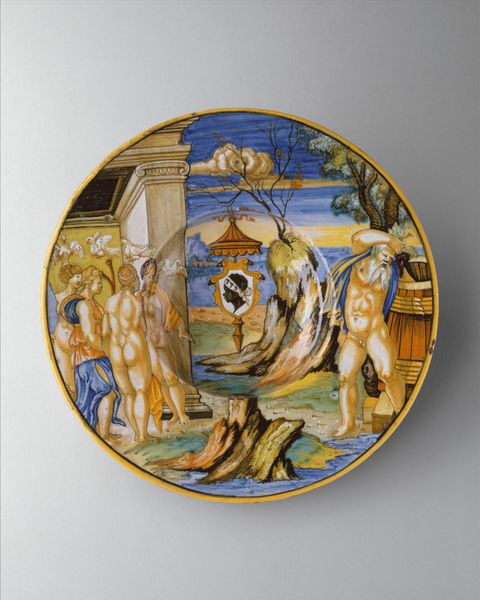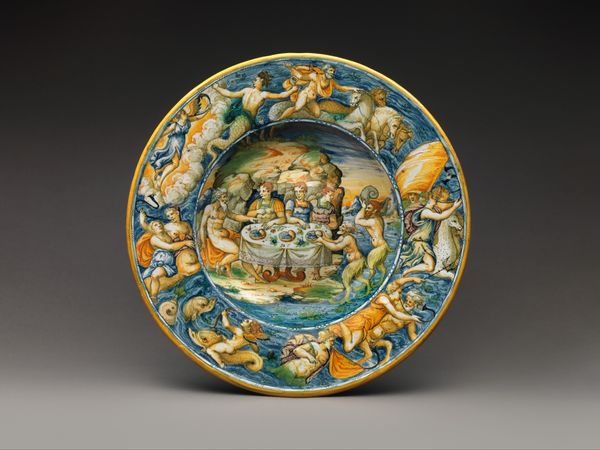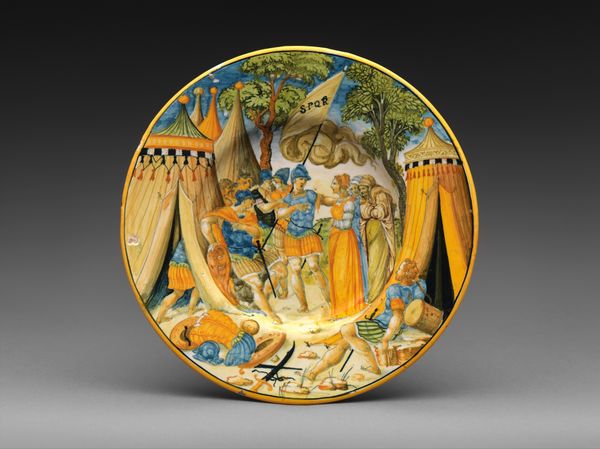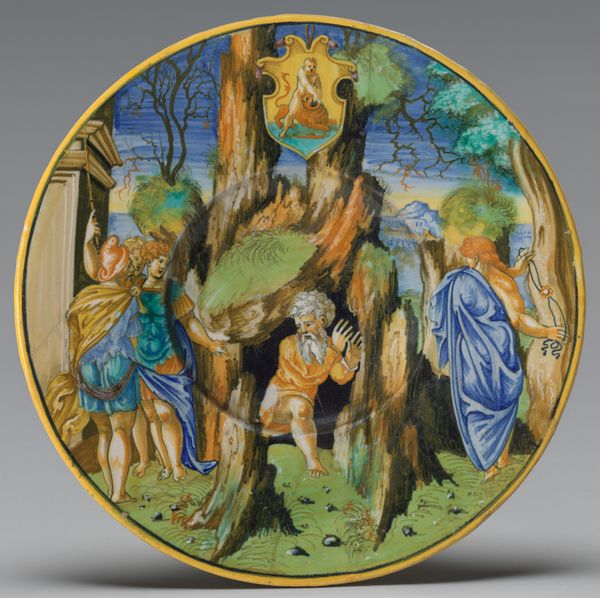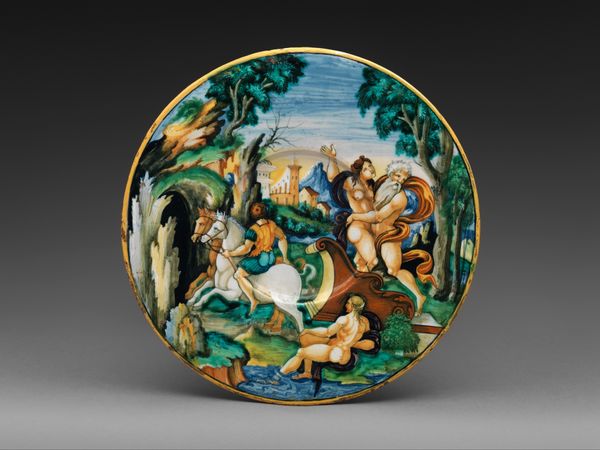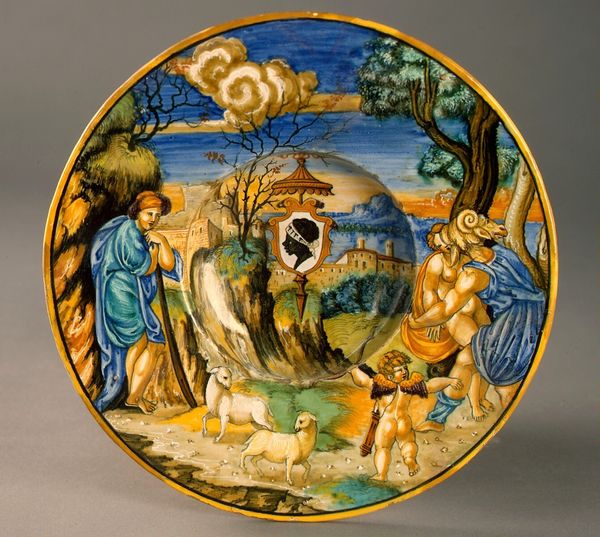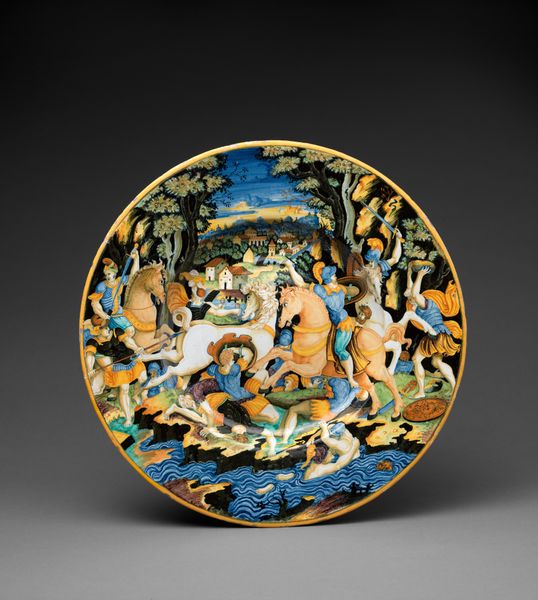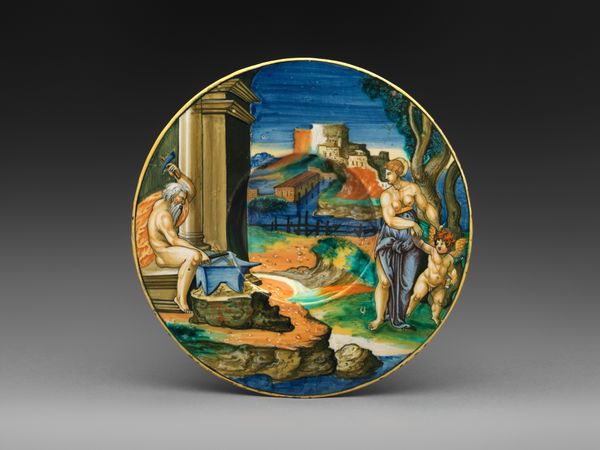
painting, ceramic
#
painting
#
ceramic
#
figuration
#
history-painting
#
italian-renaissance
Dimensions: Diameter: 11 11/16 in. (29.7cm)
Copyright: Public Domain
Curator: Before us is a ceramic plate attributed to Francesco Xanto Avelli da Rovigo, dating to 1539. It is currently held in the collection of the Metropolitan Museum of Art. Editor: The first impression I have is one of vibrant storytelling. There is a dynamic use of color and narrative elements—it seems almost bursting with energy despite the stillness of the medium. Curator: Absolutely. Note how the artist divides the composition into distinct registers, almost like a classical frieze. Observe the calculated use of light and shadow to model the figures. This contributes to a clear spatial organization. Editor: Yes, and that spatial organization serves a specific function related to its materiality, doesn't it? We are looking at functional tableware; a “tagliere.” Decoration becomes crucial, as does who owns and consumes from it. These types of commissions reflected social status in the Italian Renaissance, highlighting advancements in the ceramics trade itself. Curator: Precisely. The idealized human form, the detailed drapery, and balanced composition reveal the impact of classical ideals during the Renaissance. Do you observe how Xanto uses subtle variations in color saturation to denote depth, pulling the eye towards a point of perspective? Editor: I am curious about the function beyond decoration. Serving platters and expensive commissions required the knowledge and labor of a workshop. As an object to hold and display within a home, I imagine it becoming a prompt for dramatic storytelling at mealtimes and social gatherings. How does it reflect that act? Curator: Its materiality as an object invites consideration of the functional yet decorative qualities of this piece. Also consider, in formal terms, the overall effect produced from a harmony of line and chromatic arrangement that evokes intellectual refinement and emotional impact on the viewer. Editor: Examining art like this really bridges "high art" with craft traditions by valuing material context alongside artistic skill. A functional and lovely way of marking an occasion! Curator: Yes, examining the object’s presence enriches how we perceive the history and values in an art historical object like this one.
Comments
No comments
Be the first to comment and join the conversation on the ultimate creative platform.
